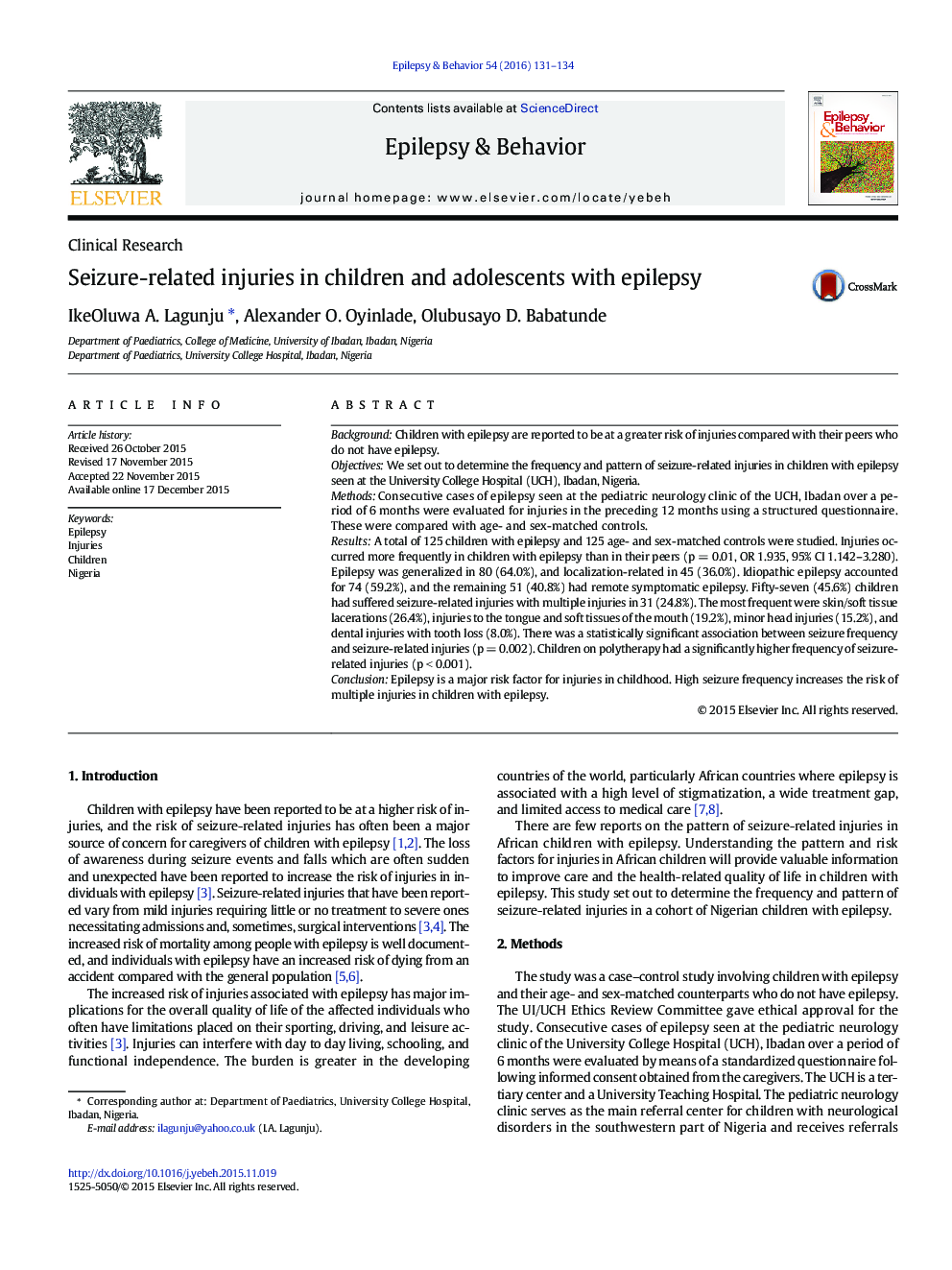| Article ID | Journal | Published Year | Pages | File Type |
|---|---|---|---|---|
| 6010756 | Epilepsy & Behavior | 2016 | 4 Pages |
â¢We evaluated 125 children with epilepsy and their age and sex-matched peers without epilepsy for a history of injury.â¢Children with epilepsy showed a significantly increased frequency of injuries.â¢Soft tissue injuries, head injuries and dental injuries are the commonestâ¢High seizure frequency and use of more than one AED are associated with an increased risk of injuriesâ¢The paper is a significant addition to the few reports on the pattern of injuries in African children with epilepsy
BackgroundChildren with epilepsy are reported to be at a greater risk of injuries compared with their peers who do not have epilepsy.ObjectivesWe set out to determine the frequency and pattern of seizure-related injuries in children with epilepsy seen at the University College Hospital (UCH), Ibadan, Nigeria.MethodsConsecutive cases of epilepsy seen at the pediatric neurology clinic of the UCH, Ibadan over a period of 6 months were evaluated for injuries in the preceding 12 months using a structured questionnaire. These were compared with age- and sex-matched controls.ResultsA total of 125 children with epilepsy and 125 age- and sex-matched controls were studied. Injuries occurred more frequently in children with epilepsy than in their peers (p = 0.01, OR 1.935, 95% CI 1.142-3.280). Epilepsy was generalized in 80 (64.0%), and localization-related in 45 (36.0%). Idiopathic epilepsy accounted for 74 (59.2%), and the remaining 51 (40.8%) had remote symptomatic epilepsy. Fifty-seven (45.6%) children had suffered seizure-related injuries with multiple injuries in 31 (24.8%). The most frequent were skin/soft tissue lacerations (26.4%), injuries to the tongue and soft tissues of the mouth (19.2%), minor head injuries (15.2%), and dental injuries with tooth loss (8.0%). There was a statistically significant association between seizure frequency and seizure-related injuries (p = 0.002). Children on polytherapy had a significantly higher frequency of seizure-related injuries (p < 0.001).ConclusionEpilepsy is a major risk factor for injuries in childhood. High seizure frequency increases the risk of multiple injuries in children with epilepsy.
